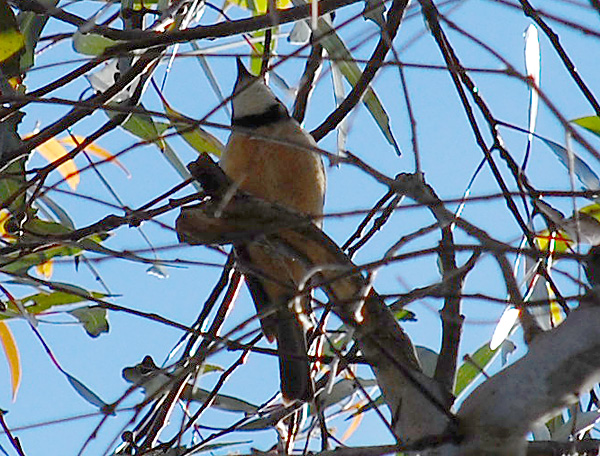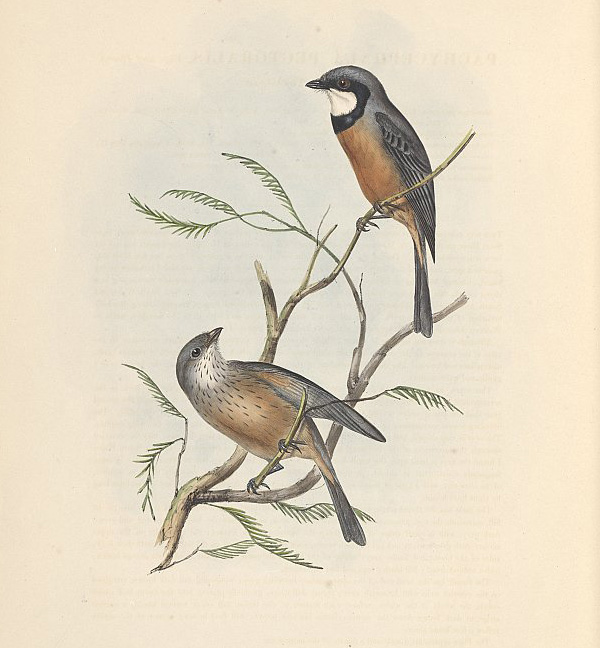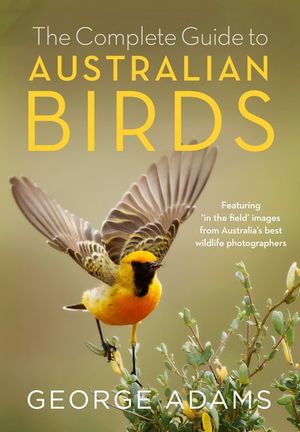Rufous Whistler
Pachycephala rufiventris
Family: Pachycephalidae (Whistlers, Shrike-thrushes and allies, 14 species in Australia).
Size: 17 cm
Distribution: Almost all of Australia except TAS and small areas in central and central-West Australia
Status: Common
Habitat: Mostly open forest, woodland, mallee and scrub of arid interior, less common in wetter tall forests. Nomadic or migratory in parts of Australia
References: Simpson and Day, Reader's Digest
The Rufous Whistler is a lovely bird, the male has striking colours, with a thick black stripe arouns his head, and a pure white throat underneath. The belly of the bird is a rufous (reddish-brown) colour, with darker wings and a mid-brown on top of the bird. The female is more of a brown colour overall though she does have a lighter (but not pure white) throat, and a slightly reddish belly (but not nearly as coloured as the male).
They are very similar to the Golden Whistler, which has a very bright yellow colour instead of the rufous colour.
They are usually seen in native bushland, not so much in people's gardens. This is perhaps more true of the Rufous Whistler than Golden Whistler, which is seen in my own garden (which backs onto bush and has a large gum tree in it ) now and then.

Photo: Lawson, Blue Mountains NSW

Photo: Lawson, Blue Mountains NSW

Artwork: John Gould, 'The Birds of Australia', 1848. Original Scanned Image.
Gould call this plate the Golden Whistler (with the same scientific name), but it looks exactly like the Rufous Whistler, not the Golden Whistler. I'm not sure what is going on with this.
Some Birdwatching Resources
|
 NEW: The Complete Guide to Australian Birds, by George Adams.
NEW: The Complete Guide to Australian Birds, by George Adams. This is another of the newer ones (published in November 2018) that I bought recently (June 2020). It's got photographs rather than drawn pictures of the birds. They're really good quality photos. 10 or more years ago, the Australian bird field guides with photographs definitely weren't in the same class as the ones with hand-drawn pictures, but that seems to have changed. Now I think it's more a matter of personal preference. I imagine that the massive increases in availability of long-zoom-distance digital photographic equipment has made it much easier for there to be better quality photos of birds.
This book has colured strips down the outside of each page so you can find the different types of birds easily, which I really like.
Purchase from Australia (The Nile)
Purchase from Australia (Fishpond)
Purchase from Amazon.com (USA Site)
Purchase from Amazon.com.au (Australian Site)
| See AlsoAustralian Bird Field Guides
Return to Australian Birds
Return to Site Map
Share This Page
australia rufous whistler
Content is copyright © Survive.au 2005-2025 All Rights Reserved. Terms of Use. Definitely read the disclaimer before trying anything from this website, especially including the practices and skills. This website uses affiliate links – this doesn't cost you any more, but I get a commission on purchases made through the website. As an Amazon Associate I earn similarly from qualifying purchases.
|





